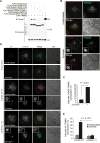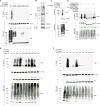Ubiquitin Ligase TRIM62 Regulates CARD9-Mediated Anti-fungal Immunity and Intestinal Inflammation
- PMID: 26488816
- PMCID: PMC4672733
- DOI: 10.1016/j.immuni.2015.10.005
Ubiquitin Ligase TRIM62 Regulates CARD9-Mediated Anti-fungal Immunity and Intestinal Inflammation
Abstract
CARD9 is a central component of anti-fungal innate immune signaling via C-type lectin receptors, and several immune-related disorders are associated with CARD9 alterations. Here, we used a rare CARD9 variant that confers protection against inflammatory bowel disease as an entry point to investigating CARD9 regulation. We showed that the protective variant of CARD9, which is C-terminally truncated, acted in a dominant-negative manner for CARD9-mediated cytokine production, indicating an important role for the C terminus in CARD9 signaling. We identified TRIM62 as a CARD9 binding partner and showed that TRIM62 facilitated K27-linked poly-ubiquitination of CARD9. We identified K125 as the ubiquitinated residue on CARD9 and demonstrated that this ubiquitination was essential for CARD9 activity. Furthermore, we showed that similar to Card9-deficient mice, Trim62-deficient mice had increased susceptibility to fungal infection. In this study, we utilized a rare protective allele to uncover a TRIM62-mediated mechanism for regulation of CARD9 activation.
Copyright © 2015 Elsevier Inc. All rights reserved.
Figures






References
-
- Berger G, Durand S, Goujon C, Nguyen XN, Cordeil S, Darlix JL, Cimarelli A. A simple, versatile and efficient method to genetically modify human monocyte-derived dendritic cells with HIV-1-derived lentiviral vectors. Nat Protoc. 2011;6:806–816. - PubMed
-
- Blasi E, Mathieson BJ, Varesio L, Cleveland JL, Borchert PA, Rapp UR. Selective immortalization of murine macrophages from fresh bone marrow by a raf/myc recombinant murine retrovirus. Nature. 1985;318:667–670. - PubMed
Publication types
MeSH terms
Substances
Grants and funding
LinkOut - more resources
Full Text Sources
Other Literature Sources
Molecular Biology Databases

